There is not the slightest trace of decoration on the rice chest. Its occasional iron or brass fitting is not meant to make it more attractive, these fittings enhance the chests qualities of gravity and durability.
The structure of the rice chest, constructed from solid piece of pine tree, is depicted in bold, straight lines. The ordinary rice chest is usually designed to store one sack of rice, but even when there is not a grain of rice in it one does not think of it as some vacant shell.
It always looks chock full. There are always those four pillars at its corners which seem to be holding up a massive roof, as if this were some imposing religious edifice. These squat, solid heavy legs descend from the chest like the roots of a great tree.
While any other household item can be dismantled and moved around, the rice chest, no matter how little is inside, is of ponderous weight which anchors it firmly to one spot .Any rice chest is the one source of grain for the household, and where it sits is the symbolic center of household affairs.
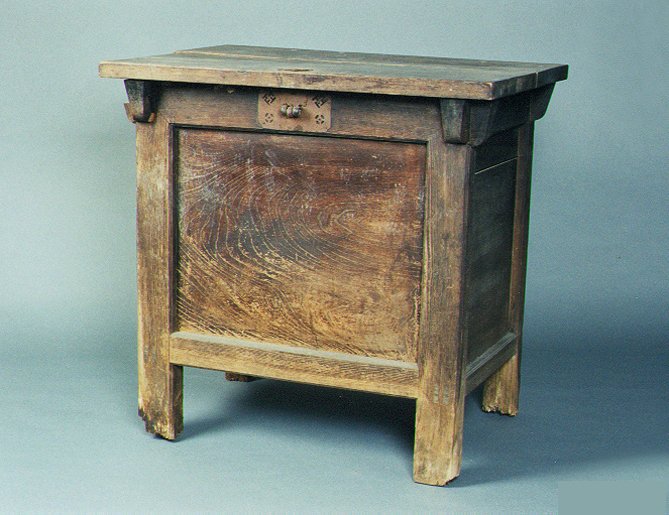
Elm wood.
H. 101.2cm, W. 106.8cm, D. 71.9cm.
Collection of the National Museum of Korea.
We associate the rice chest with the housewife, lifting open that heavy lid so many times from the morning till night in providing for the family’s nourishment. This mother of the old days wore no makeup or jewelry but, in her quiet dignity, had every strand of hair up neatly in place. Her heart was filled to bursting with love for her family, and on that heart she kept an iron lock so that none of this love would be squandered. One sees in the heavy lock on the rice chest the same husbanding of nourishment against times of want.
This article was found in the book THINGS KOREAN from O Young Lee. Charles E Tuttle Company. First edition 1999.
The rice chest was probably the most common piece of furniture in Korean houses and could be found all over the peninsula. The average size was approximately H. 80-85cm, W. 90-100cm, D. 50-60cm.
Built to be strong and sturdy to support the weight of the grains, it is designed with high legs to prevent damage caused by rats, pests, and moisture. The size of the container varies based on its purpose: large containers are used for storing rice, medium containers for mixed grains, and smaller ones for sesame seeds or red beans.
The top plate of the chest is wider than its body and divided into two sections: the front and the back. The back section is securely fixed to the body, while the front section is designed to open and close for easy access.
During the Joseon Dynasty, rice chests crafted in Bamseom, Seoul, were highly esteemed for their superior quality. Bamseom Island, located on the Han River near Yeouido, Seoul was historically known for boatbuilding. The leftover zelkova wood from boat construction on the island was used to build rice chests.
More than a functional piece of furniture, the rice chest symbolized the household’s wealth and financial status.
Larger pieces, sometimes with a bottom compartment and doors, were used by groups such as temples. Due to their rarity, they became sought-after collector’s items.

KITCHEN CHEST WITH RICE STORAGE COMPARTMENT – TUIJI-JANG.
H. 121 cm, W. 116 cm, D. 57 cm. Mid to late 19th Century.
Pine wood, iron fittings, oil finish Ch’ungcheong Province, Korea.
Collection “ANTIKASIA“.
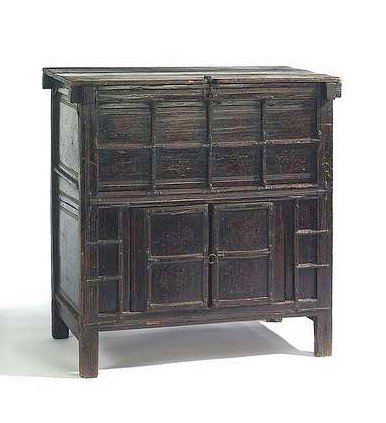
Pine wood, Mid 19th century.
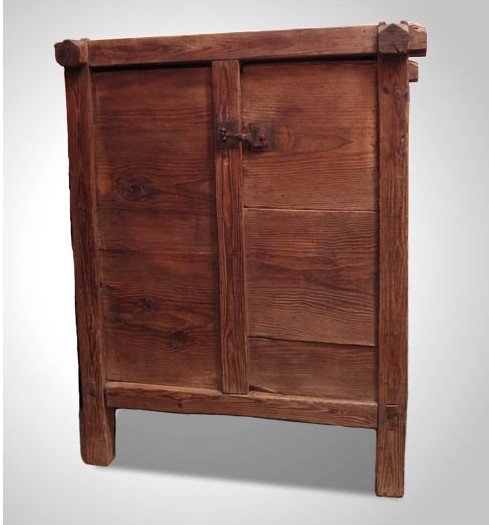
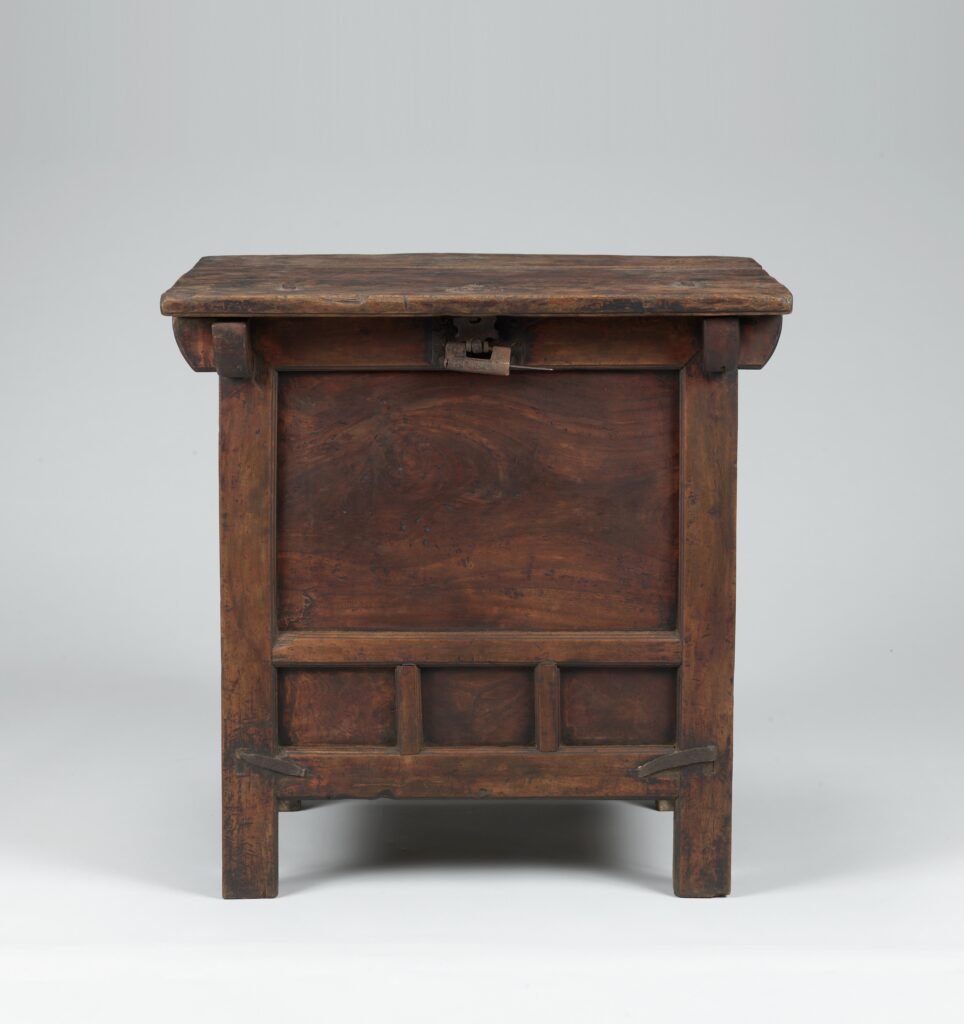
Late 19th – early 20th century. H. 58,2cm, W. 57,8cm, D. 42cm.
Collection National Museum of Korea.
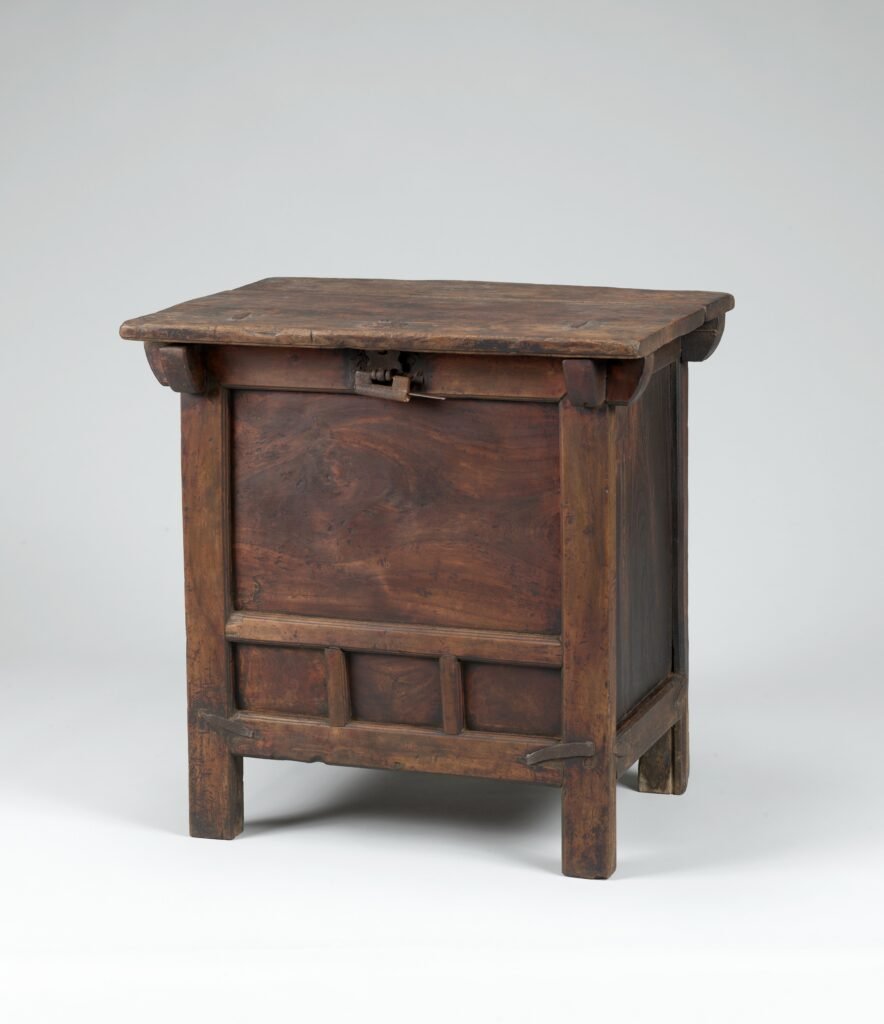
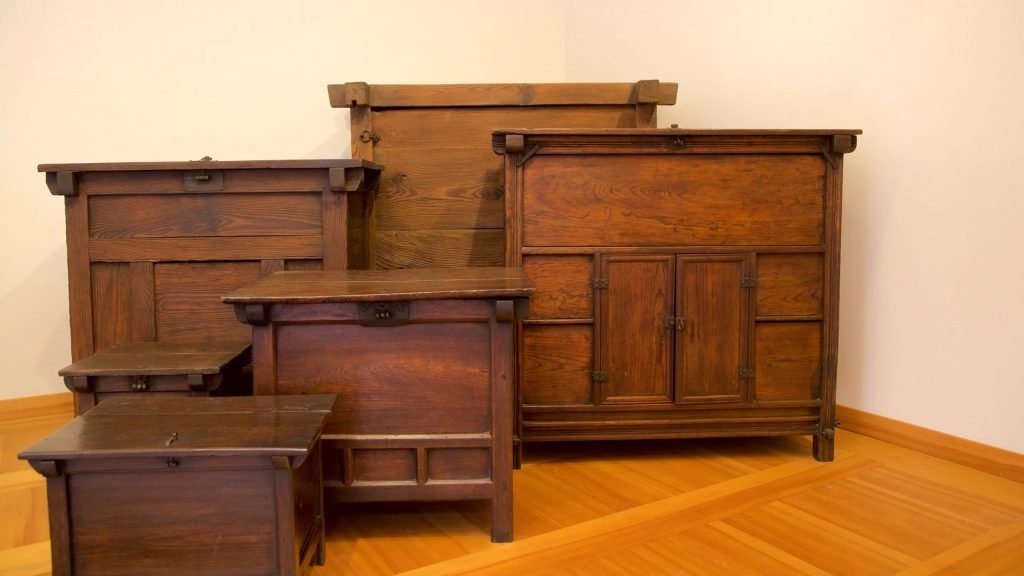
For the past 15 years, a large number of rice chests have been restored and their designs adapted for modern usage. Due to the poor condition in which these pieces were found, their sizes were modified to make them shorter and repurposed as coffee tables (approximately H. 40-45cm). The initial front panel was often removed and replaced with doors, some of which featured lattice designs.
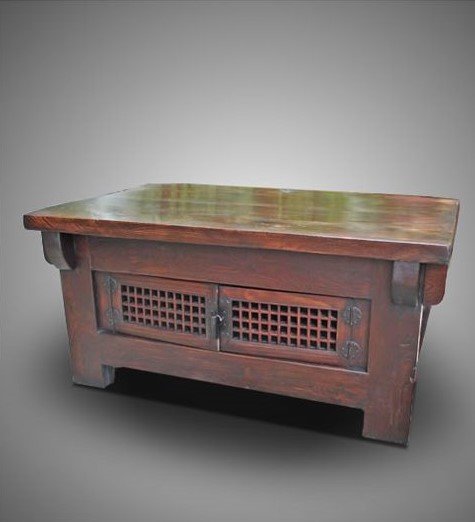
Red pine wood. Top & Sides opening. This chest has been modified. Dimension reduce (height) and new doors added.
H. 52cm, L. 105cm, D. 65cm.

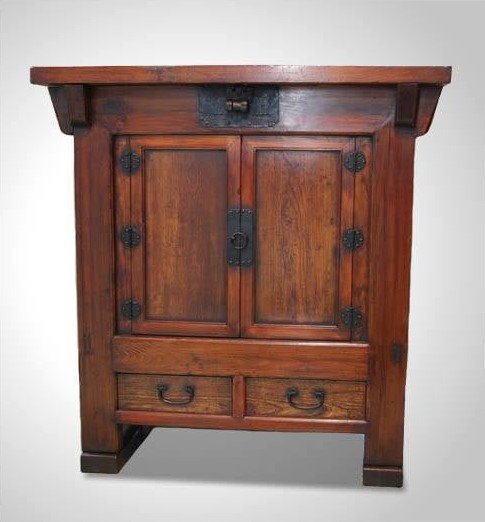
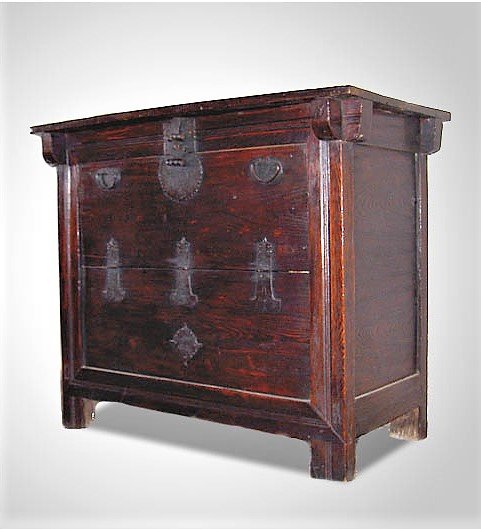
The wooden chest (photo below) was traditionally utilized for storing grains. It features legs crafted from logs, planks inserted between the four legs and the base, and two boards affixed on top. The upper part is designed to open for pouring and scooping grains. A metal ornament is attached to the front panel to accommodate a lock. In earlier times, the size of a wooden rice chest was indicative of the economic status of the household.

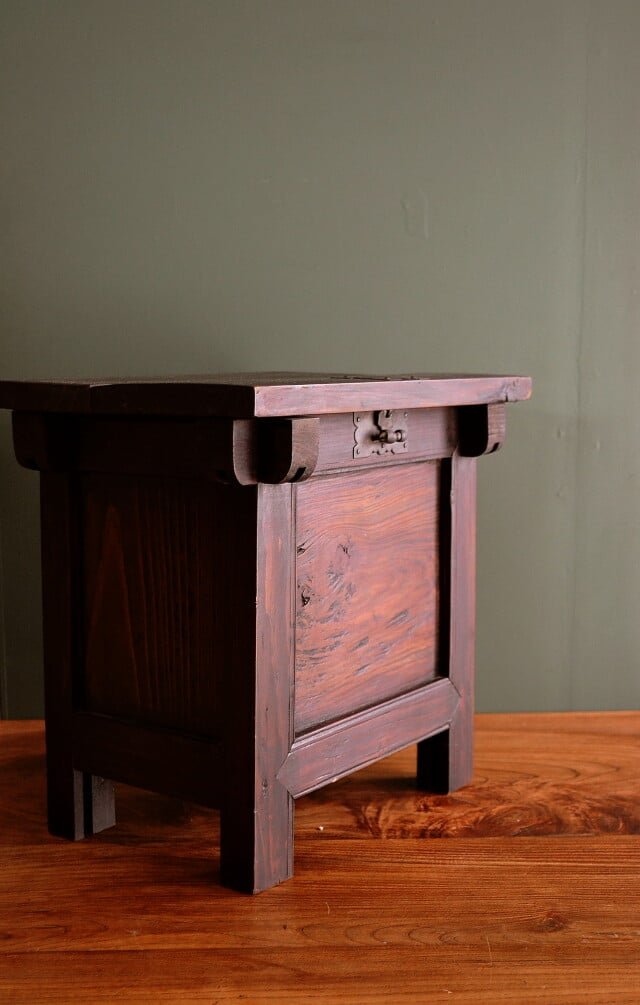
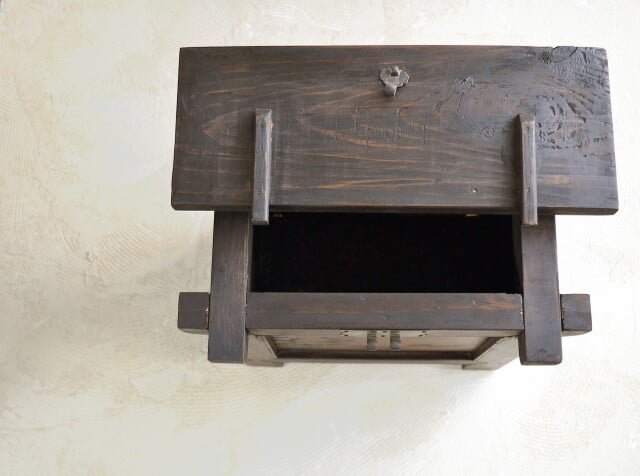

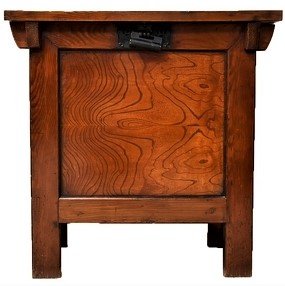
Iron fittings. Early 20th century.

Height. 73 cm – Width. 87 cm – Depth. 60 cm
COLLECTIONS IN KOREA.
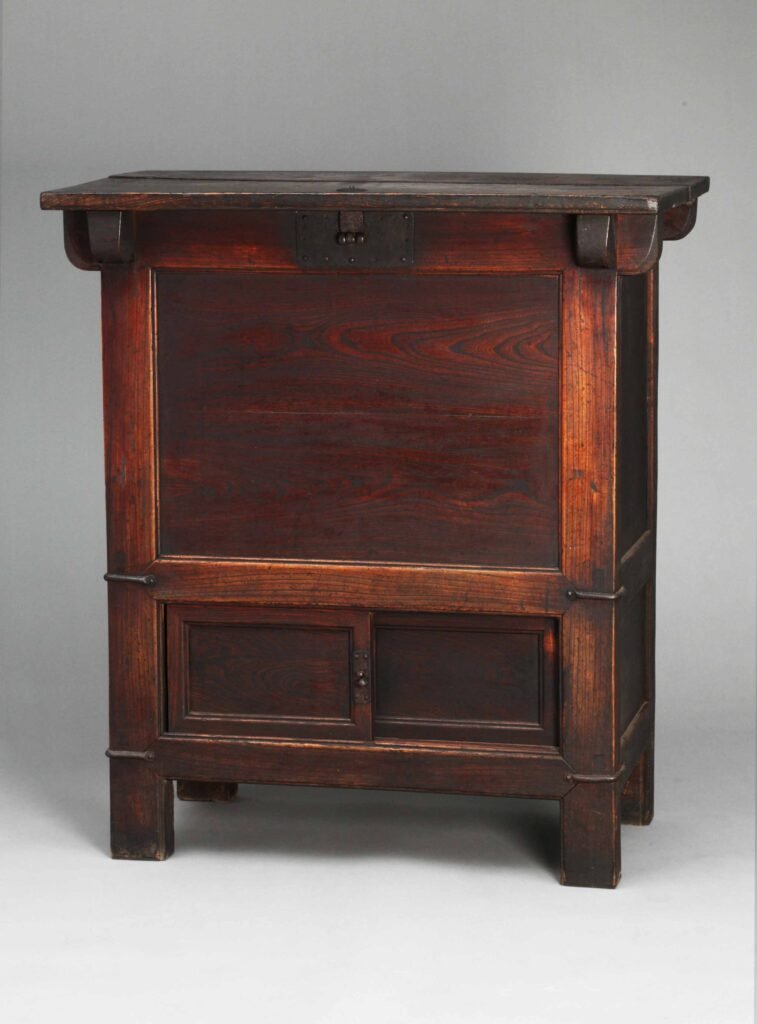
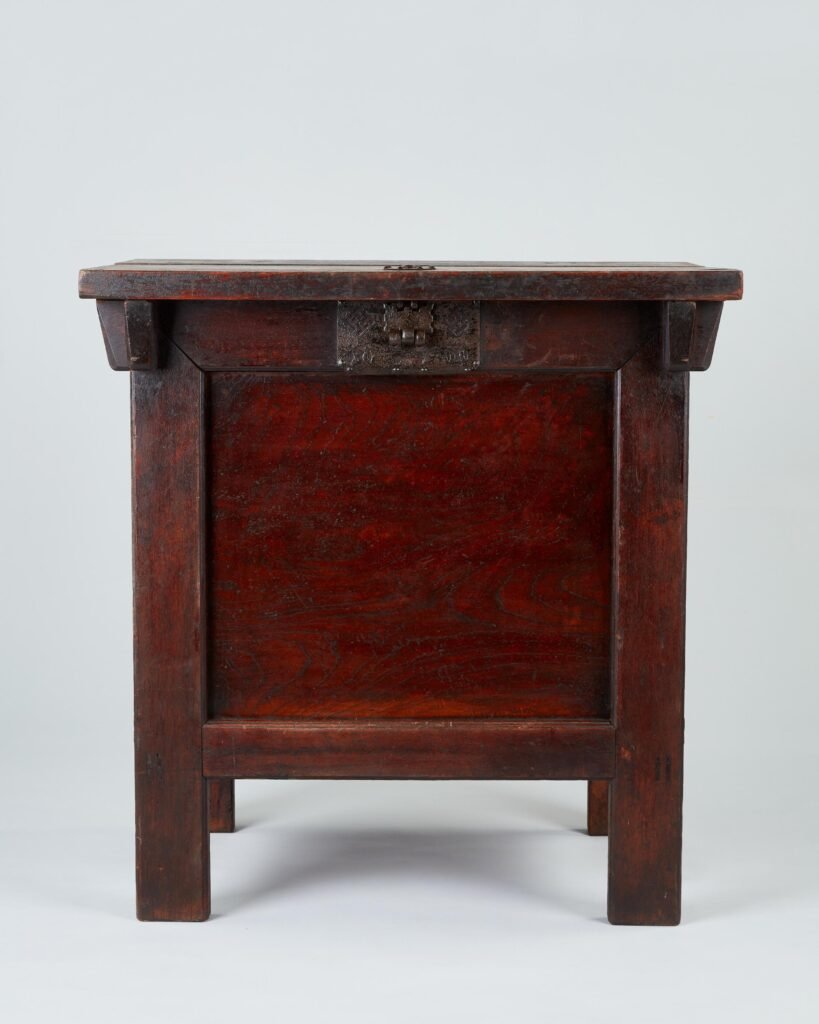
Collection: Bupyeong History Museum, Korea.

Collection: Bupyeong History Museum, Korea.
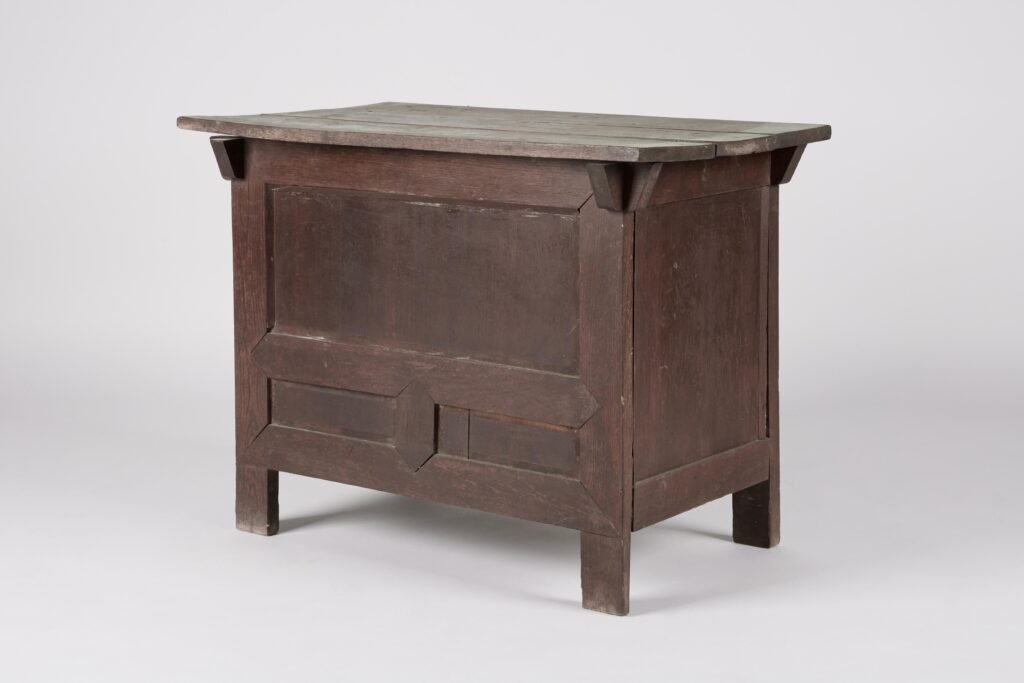

Collection: Sangju Museum, Korea.
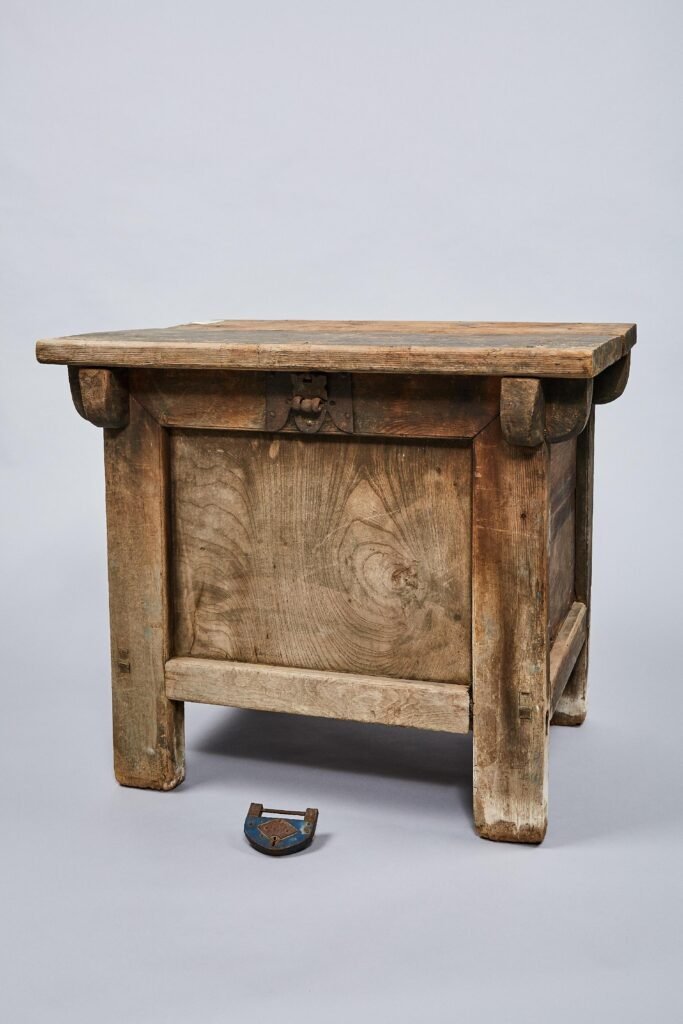
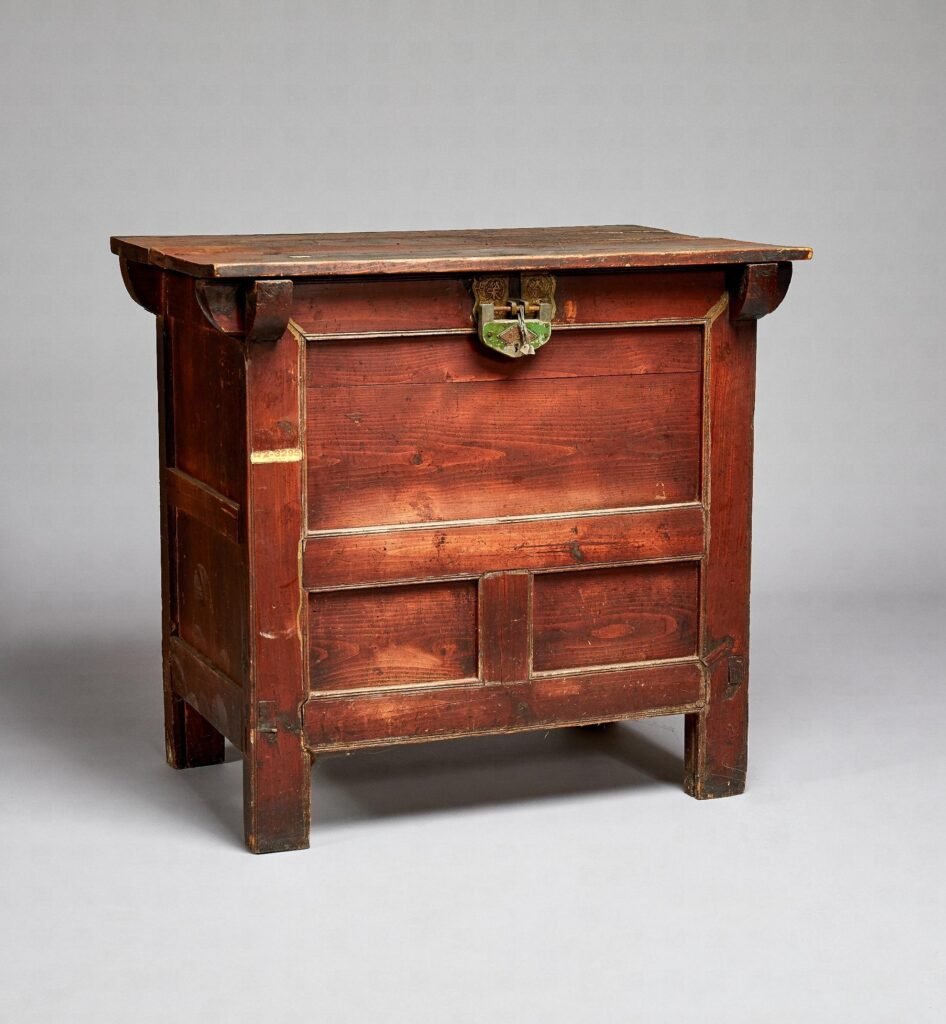
Collection: Gimhae Hallym Museum, Korea.

Collection: Daegu University Central Museum, Korea.



PRESENTED AT AUCTIONS.
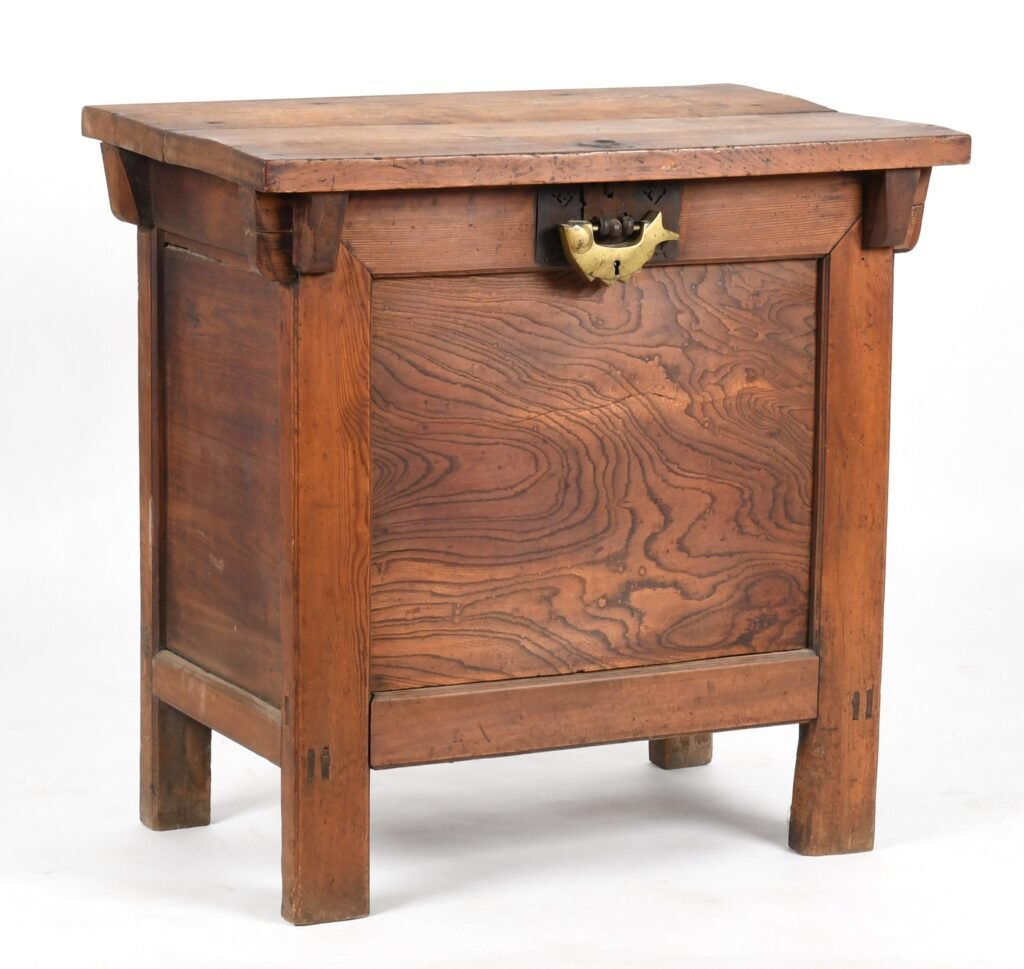
The rectangular hinged top enclosing an open interior. Mortise and tenon construction throughout. With a brass fish form lock.
Dimensions: Height 38 1/4in; width 38 3/4in; depth 25in.
Locati LLC.. Pineville, PA, US. October 20, 2024.
Estimate: $200 USD – $300 USD. Starting bid: $100 USD. SOLD for $ 350 USD.

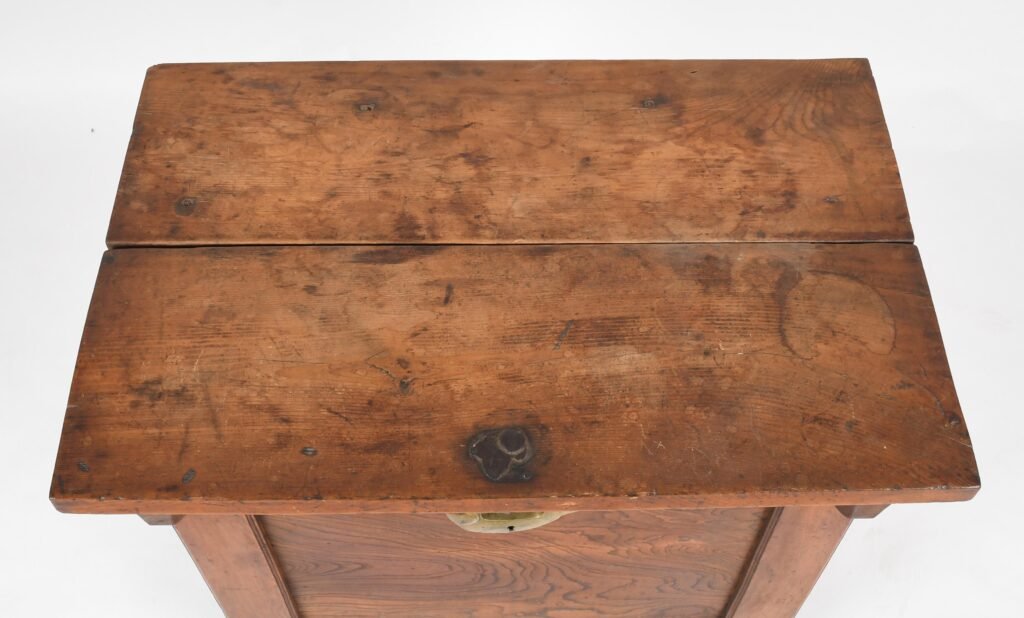

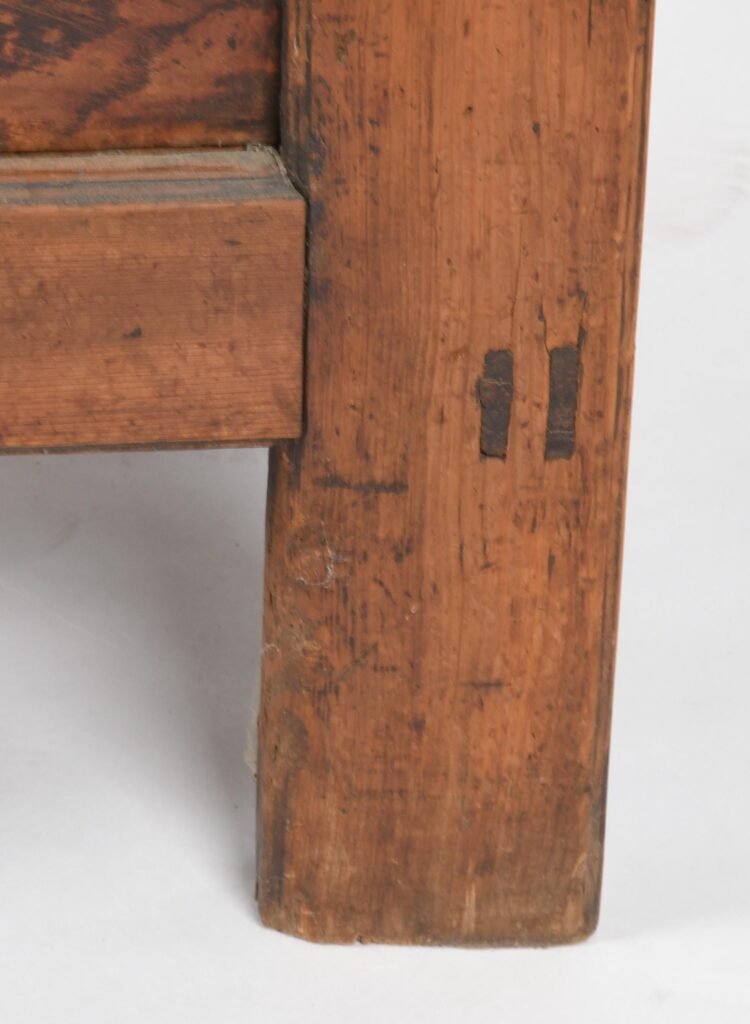

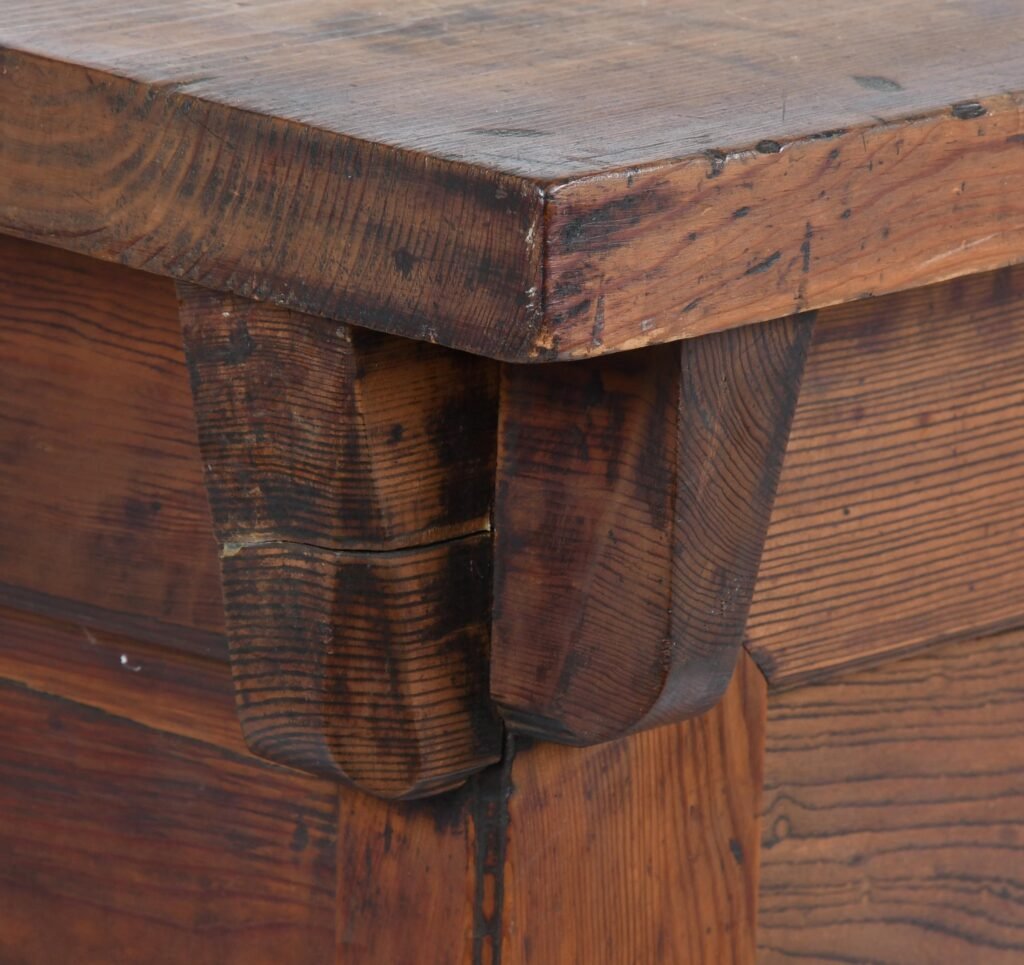


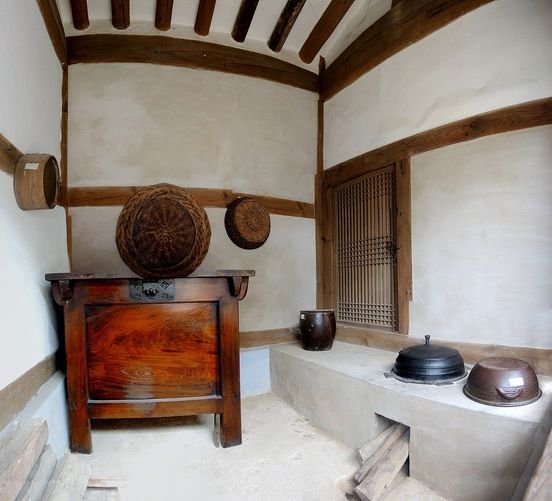
[…] Tuiju, boxes used for storing rice and beans, were commonly used all over the peninsula. Larger pieces were used to store rice, while smaller ones were used for beans. Both types of boxes were constructed with elm or pine panels fitted into a thick frame designed to protect the contents from rodents and moisture. Metalwork was not common on kitchen furniture, and iron was primarily used for structural purposes. […]